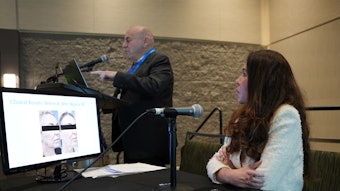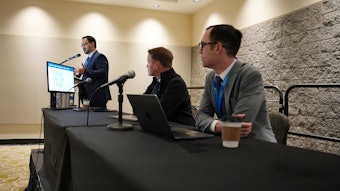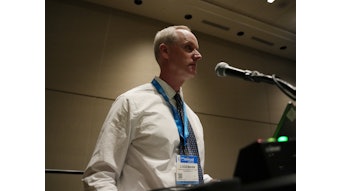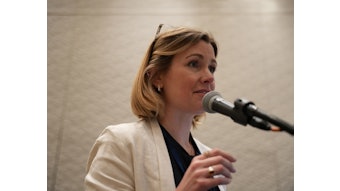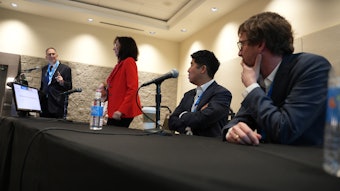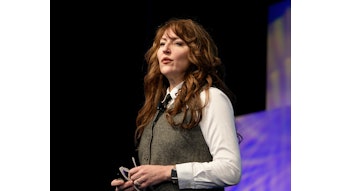Ask questions, address concerns
Understand the role social determinants of health play in your patients’ dermatologic care.

U023 – Bridging the Gap: Addressing Social Determinants of Health to Decrease Health Disparities in Dermatology
3:30-4:30 p.m. | Friday, March 7
Location: W208A
Equitable and effective. These are two words driving improved patient care in 2025 and beyond. They also represent a new approach for addressing the role of social determinants — or drivers — of health (SDoH) in dermatology.
SDoH are factors that influence an individual’s ability to maximize their health potential. They account for five domains: economic stability, education access and quality, health care access and quality, neighborhood and built environment, and social and community context.
According to Herbert B. Castillo Valladares, MD, MHS, FAAD, an assistant professor of dermatology at University of California San Francisco, there is growing evidence of the impact of health disparities in dermatology. Dr. Castillo Valladares is the director of this afternoon’s session, U023 – Bridging the Gap: Addressing Social Determinants of Health to Decrease Health Disparities in Dermatology.
“Social determinants of health significantly impact dermatology patients’ ability to manage and treat their skin conditions,” Dr. Castillo Valladares said. “By assessing social risk factors through thoughtful questions and formulating patient-centered care plans, dermatologists can improve health outcomes and ensure that care is equitable and effective.”
In addition to Dr. Castillo Valladares, session speakers Rebecca Vasquez, MD, FAAD, and Olivia Rose Ware, MD, FAAD, will review the impact of SDoH on disease presentation and care delivery for vulnerable populations through a case-based format.
Case by case
Dr. Castillo Valladares shared several anonymous, illustrative case examples that highlight the impact of SDoH on dermatology patients:
Case 1: “MT” — Low income
Background: MT is a 55-year-old woman who presents with eczema. She has no health insurance and works multiple low-wage jobs to support her family.
Impact of SDoH: Due to her job schedule and financial strain, MT struggles to afford co-pays for medications and dermatology visits. She also lacks reliable transportation to attend appointments.
Consequences: This has resulted in poor control of her eczema, with frequent flare-ups and some inpatient hospitalizations. The stress of balancing her work, financial limitations, and health exacerbates her skin condition.
Case 2: “JC” — Housing instability and poor nutrition
Background: JC is a 30-year-old man with psoriasis who is experiencing homelessness.
Impact of SDoH: JC has irregular access to personal hygiene facilities and difficulty managing his psoriasis due to lack of stable housing. Stress and poor nutrition, both related to homelessness, exacerbate his condition.
Consequences: His psoriasis remains poorly controlled, leading to extensive skin involvement and significant physical discomfort, which impacts his mental and social well-being.
Case 3: “AR” — Limited English proficiency
Background: AR, a 65-year-old man who arrived alone to the U.S. from Syria one year ago, has limited English proficiency and is experiencing pain and increased size of a skin lesion on his nose concerning for basal cell carcinoma (BCC). Although he is eligible for public health insurance, he does not feel comfortable navigating the health care system and is unable to schedule appointments due to language barriers.
Impact of SDoH: Communication and language barriers are leaving AR excluded from timely care. His physicians and non-physician providers may also lack the necessary language skills or resources to communicate effectively with him.
Consequences: Lack of timely dermatology referral delays his care, and the BCC continues to increase in size and cause pain. This may lead to a more complicated procedure in the future.
The importance of screening
Dr. Castillo Valladares encourages dermatologists to implement a routine screening process into the patient intake and the patient encounter to accurately assess SDoH in dermatology. During the session, speakers will review sample, evidence-based questions taken from The Accountable Health Communities Health-Related Social Needs Screening Tool, such as:
Housing/living situation: What is your living situation today?
Food: Within the past 12 months, have you worried that your food would run out before you got money to buy more?
- Often true
- Sometimes true
- Never true
Transportation: In the past 12 months, has lack of reliable transportation kept you from attending medical appointments, meetings, or work or from getting things needed for daily living?
- Yes
- No
Financial strain: How hard is it for you to pay for the very basics, like food, housing, medical care, and heating?
- Very hard
- Somewhat hard
- Not hard at all
How to address your patient’s SDoH
Dr. Castillo Valladares said dermatologists should consider the following tips to develop specific treatment plans.
Incorporate social support and resources: Provide information about community resources (e.g., food banks, transportation options, financial assistance programs, local shelters) that can help patients manage their condition. Connect patients with patient navigators and social workers/case managers who can help coordinate care and provide support for accessing resources.
Consider medication accessibility: Prescribe medications that are affordable and accessible, or suggest alternatives if cost is a barrier. Help your patient navigate patient assistance programs, and offer samples or discount cards when possible to help patients manage the cost of prescriptions.
Personalize the treatment plan: Consider the patient’s living conditions, employment, and daily routine when recommending treatments. For example, if a patient has limited access to showers, consider systemic agents over intensive topical regimens if severity warrants this option. Recognize cultural, language, or literacy differences and provide education in a way that is approachable and understandable (e.g., using plain language or translation services).
Engage in shared decision-making: Include patients in decisions about their care by discussing their priorities and concerns. This approach helps build trust and ensures that treatment plans are realistic and achievable.
